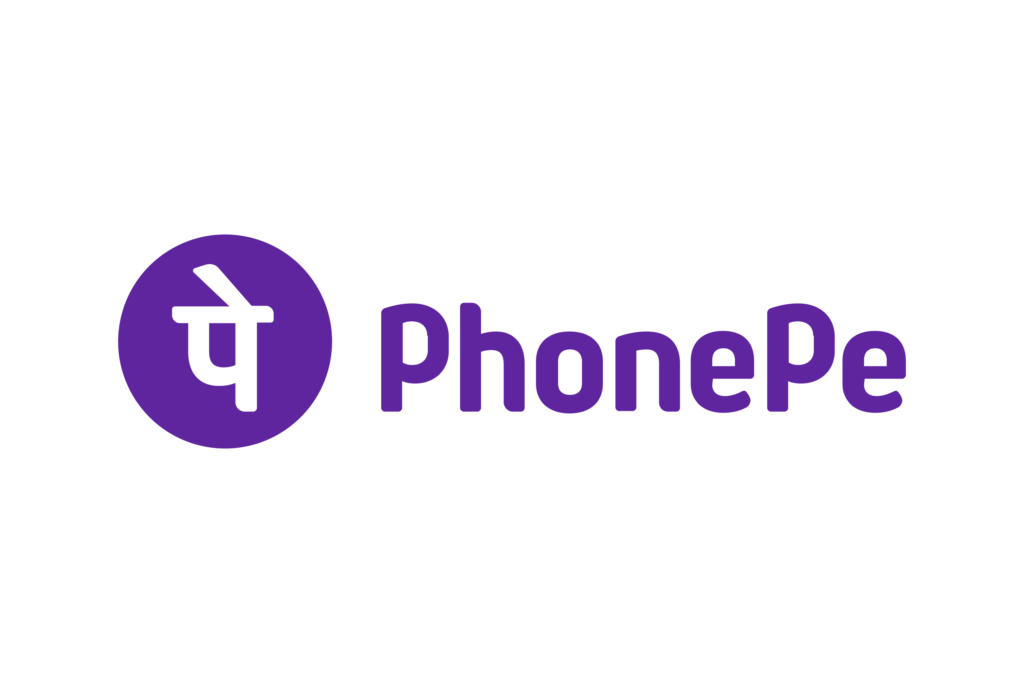PhonePe, a leading player in India’s digital payments ecosystem, faced a cybersecurity incident in 2020 that threatened the security of its platform and the confidentiality of user data. The incident involved a sophisticated phishing attack targeting PhonePe users, wherein fraudsters impersonated the company to steal sensitive information such as login credentials and financial details.
This case study examines the incident, PhonePe’s response, and how cyber insurance played a crucial role in managing the aftermath.
Background of PhonePe
PhonePe has been instrumental in promoting digital transactions in India, offering a wide range of services that cater to millions of users. Its rapid growth and extensive user base make it a significant player in the digital payments landscape.
- Founded: 2015
- Headquarters: Bangalore, India
- Services: Digital payments, money transfers, bill payments, and financial services
- Market Position: One of the top digital payment platforms in India
The Incident
In 2020, PhonePe detected a sophisticated phishing attack that targeted its users. The attackers impersonated PhonePe to deceive users into divulging sensitive information, including login credentials and financial details.
Key Details of the Incident:
- Date of Incident: 2020
- Type of Attack: Sophisticated phishing attack
- Impact: Compromised user credentials, potential financial losses, and concerns about data security
Immediate Response and Containment
PhonePe’s immediate response was critical in mitigating the impact of the phishing attack and ensuring the security of its users’ data.
Steps Taken:
- Incident Detection: The phishing attack was quickly identified through PhonePe’s robust monitoring systems and user reports.
- Containment Measures: Immediate steps were taken to block the phishing websites and inform users about the fraudulent activities.
- Communication: PhonePe promptly communicated with its users, advising them on how to recognize phishing attempts and protect their information.
- Security Audits: Comprehensive security audits were conducted to assess the extent of the breach and enhance the platform’s security measures.
Cybersecurity Measures and Proactive Strategies
PhonePe had implemented several proactive cybersecurity measures prior to the incident, which played a significant role in mitigating the attack’s impact.
1. Regular Security Audits
Regular security audits are a cornerstone of PhonePe’s cybersecurity strategy, ensuring that vulnerabilities are identified and addressed promptly. These audits involve a systematic examination of the company’s digital infrastructure to uncover weaknesses that could be exploited by cyber attackers.
Important Elements of Continual Security Audits:
- Comprehensive Assessment: The audits cover all aspects of PhonePe’s digital infrastructure, including software, hardware, network configurations, and third-party integrations.
- Automated Scanning Tools: Use of automated vulnerability scanning tools to detect known vulnerabilities in systems and applications.
- Manual Penetration Testing: Security experts perform manual penetration testing to identify vulnerabilities that automated tools might miss. This involves simulating cyber attacks to test the robustness of PhonePe’s defenses.
- Configuration Reviews: Detailed reviews of system and network configurations to ensure they adhere to security best practices and standards.
- Audit Frequency: Regularly scheduled audits, typically quarterly or semi-annually, to ensure continuous monitoring and improvement of security posture.
2. Advanced Threat Detection Systems
Advanced threat detection systems are deployed to provide real-time monitoring and defense against cyber threats. These systems are designed to detect, analyze, and mitigate threats before they can cause significant harm.
Key Features of Advanced Threat Detection Systems:
- Real-Time Monitoring: Continuous monitoring of network traffic, system logs, and user activities to detect suspicious behavior or anomalies.
- Machine Learning Algorithms: Use of machine learning and artificial intelligence to identify patterns and predict potential threats, allowing for proactive threat management.
- Threat Intelligence Integration: Integration with global threat intelligence feeds to stay updated on the latest cyber threats and vulnerabilities. This helps in quickly identifying and mitigating new threats as they emerge.
- Behavioral Analysis: Analyzing user behavior and system activity to detect deviations from normal patterns, which may indicate a potential security breach.
- Automated Response: Automated responses to certain types of threats, such as isolating affected systems or blocking malicious IP addresses, to prevent the spread of the attack.
3. User Education Programs
User education programs are essential for empowering PhonePe’s users to recognize and respond appropriately to cyber threats, particularly phishing attacks.
Key Elements of User Education Programs:
- Awareness Campaigns: Regular awareness campaigns using emails, social media, and in-app notifications to educate users about common cyber threats and safe online practices.
- Training Sessions: Interactive training sessions and workshops for users to learn about the latest phishing techniques and how to avoid falling victim to such scams.
- Educational Content: Development of easy-to-understand educational materials, such as infographics, videos, and articles, that explain cybersecurity concepts and best practices.
- Phishing Simulations: Conducting phishing simulation exercises to test users’ ability to identify phishing attempts. Users receive feedback on their performance, helping them improve their ability to spot phishing attacks.
- Support Resources: Providing access to a dedicated support portal where users can report suspicious activities and seek guidance on cybersecurity issues.
4. Two-Factor Authentication (2FA)
Two-Factor Authentication (2FA) adds an extra layer of security to user accounts by requiring two forms of verification before granting access. This lowers the likelihood of unwanted access considerably, even in the event that login credentials are stolen.
Implementation of 2FA:
- User Verification: Users are required to provide two types of verification throughout the login process: something they have (like a mobile device) and something they know (like a password).
- One-Time Password (OTP): PhonePe uses OTPs sent to the user’s registered mobile number or email as the second factor of authentication. This OTP must be entered along with the password to gain access.
- Authentication Apps: Users can also use authentication apps like Google Authenticator or Authy to generate time-based OTPs, providing an additional layer of security.
- Biometric Authentication: Where applicable, PhonePe incorporates biometric authentication methods, such as fingerprint or facial recognition, as a second factor.
- Adaptive Authentication: For added security, PhonePe uses adaptive authentication methods that assess the risk level of a login attempt based on factors like device type, location, and user behavior. Higher-risk logins may require additional verification steps.
Benefits of 2FA:
- Enhanced Security: Significantly reduces the likelihood of account breaches, even if passwords are compromised.
- User Confidence: Increases user confidence in the platform’s security measures, encouraging more frequent use of digital payment services.
- Compliance: Helps PhonePe comply with regulatory requirements related to user authentication and data protection.
The Role of Cybersecurity Insurance
PhonePe’s cyber security insurance policy was tailored to address the specific risks faced by digital payment platforms. This policy provided comprehensive coverage for various aspects of the incident.
Coverage Details:
- Investigation Costs: Coverage for expenses related to investigating the phishing attack.
- Security Enhancements: Funds to enhance security protocols and prevent future attacks.
- User Reimbursements: Compensation for users who incurred financial losses due to fraudulent transactions.
- Legal Expenses: Coverage for legal fees associated with handling the incident.
- Public Relations Management: Support for managing public relations and maintaining user trust.
Recovery and Financial Impact
The cyber security insurance policy significantly mitigated the financial burden on PhonePe, enabling the company to focus on recovery and improvement rather than the immediate financial repercussions.
Table: Financial Impact Breakdown
| Category | Estimated Cost (INR) | Coverage Provided (INR) | Out-of-Pocket Cost (INR) |
| User Reimbursements | 20,000,000 | 19,000,000 | 1,000,000 |
| Investigation Costs | 5,000,000 | 4,750,000 | 250,000 |
| Security Enhancements | 10,000,000 | 9,500,000 | 500,000 |
| Legal Expenses | 3,000,000 | 2,850,000 | 150,000 |
| PR Management | 2,000,000 | 1,900,000 | 100,000 |
| Total | 40,000,000 | 38,000,000 | 2,000,000 |
The above table illustrates the financial impact breakdown and how the cyber insurance policy helped in covering most of the costs associated with the incident.
Lessons Learned and Strategic Enhancements
The incident underscored the evolving nature of cyber threats and the need for continuous vigilance. PhonePe learned valuable lessons from the attack and implemented strategic enhancements to bolster its cybersecurity framework.
Key Lessons:
- Continuous Monitoring: The importance of continuous monitoring and real-time threat detection to identify and mitigate cyber threats promptly.
- User Education: The need for ongoing user education programs to help users recognize and avoid phishing attempts.
- Advanced Security Measures: The necessity of implementing advanced security measures, such as two-factor authentication, to protect user accounts.
- Comprehensive Risk Management: The value of cyber security insurance in managing financial risks associated with cyber incidents.
Strategic Enhancements Post-Incident
Post-incident, PhonePe implemented several strategic enhancements to strengthen its cybersecurity posture.
Enhancements:
- Enhanced Phishing Detection: Integration of advanced phishing detection tools to identify and block phishing attempts more effectively.
- User Authentication: Strengthening of user authentication processes, including mandatory two-factor authentication for all users.
- Security Awareness Campaigns: Launching extensive security awareness campaigns to educate users about phishing and other cyber threats.
- Incident Response Plan: Development of a more robust incident response plan to ensure a rapid and effective response to future incidents.
Table: Strategic Enhancements Implemented
| Area of Enhancement | Description |
| Phishing Detection | Implementation of advanced phishing detection tools |
| User Authentication | Strengthening of two-factor authentication processes |
| Security Awareness Campaigns | Launching campaigns to educate users about cyber threats |
| Incident Response Plan | Developing a comprehensive and tested response plan |
Conclusion
The 2020 cybersecurity incident at PhonePe highlighted the importance of robust cybersecurity measures and the value of cyber security insurance. Despite the sophisticated nature of the phishing attack, PhonePe’s proactive approach, comprehensive risk management strategies, and transparent communication helped the company navigate the crisis effectively. The incident underscored the need for continuous investment in cybersecurity and served as a valuable learning experience for PhonePe and the broader digital payments industry.
By leveraging cyber insurance and implementing strategic enhancements, PhonePe not only mitigated the financial impact of the cyber attack but also reinforced its commitment to protecting customer interests. This case study demonstrates the critical role of preparedness and resilience in maintaining trust and confidence in the rapidly evolving landscape of digital payments.
FAQs
- What was the nature of the cybersecurity incident faced by PhonePe in 2020?
The incident involved a sophisticated phishing attack targeting PhonePe users, where fraudsters impersonated the company to steal sensitive information such as login credentials and financial details.
- How did PhonePe respond to the cybersecurity incident?
PhonePe responded by quickly identifying the phishing attack, blocking fraudulent websites, communicating with users about the attack, and conducting comprehensive security audits to enhance platform security.
- What role did cyber security insurance play in PhonePe’s recovery?
Cyber security insurance helped PhonePe cover costs related to investigating the incident, enhancing security protocols, reimbursing affected users for financial losses, and managing legal expenses and public relations.
- What strategic enhancements did PhonePe implement post-incident?
PhonePe implemented advanced phishing detection tools, strengthened user authentication processes, launched security awareness campaigns, and developed a robust incident response plan.
- What lessons were learned from the PhonePe cybersecurity incident?
Key lessons included the importance of continuous monitoring, user education, advanced security measures, and comprehensive risk management strategies like cyber security insurance.
Click here, to know more about Razorpay’s Response to a Cyber Attack.









